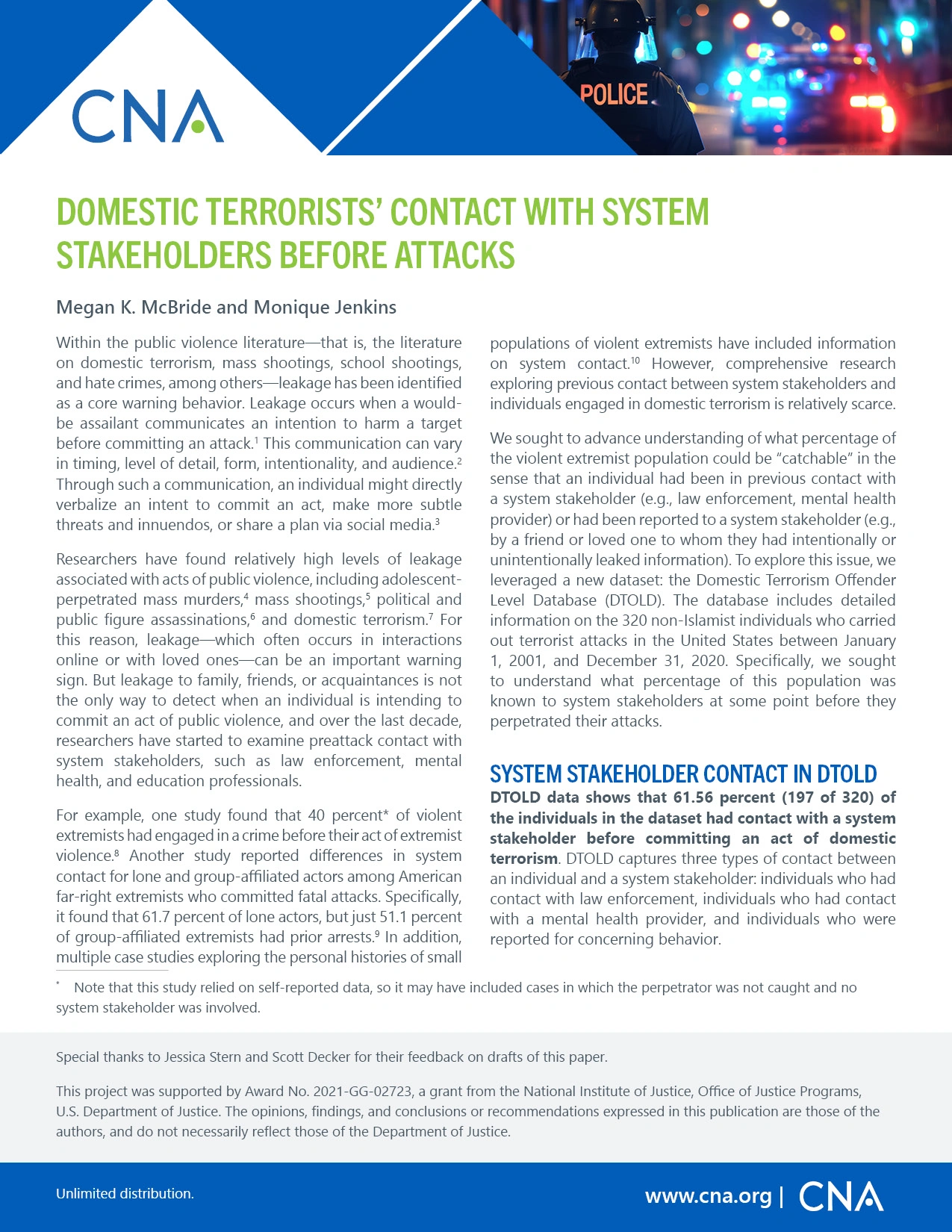Within the public violence literature—that is, the literature on domestic terrorism, mass shootings, school shootings, and hate crimes, among others—leakage has been identified as a core warning behavior. Leakage occurs when a would-be assailant communicates an intention to harm a target before committing an attack. This communication can vary in timing, level of detail, form, intentionality, and audience. Through such communication, an individual might directly verbalize an intent to commit an act, make more subtle threats and innuendos, or share a plan via social media.
Researchers have found relatively high levels of leakage associated with acts of public violence, including adolescent-perpetrated mass murders, mass shootings, political and public figure assassinations, and domestic terrorism. For this reason, leakage—which often occurs in interactions online or with loved ones—can be an important warning sign. But leakage to family, friends, or acquaintances is not the only way to detect when an individual is intending to commit an act of public violence, and over the last decade, researchers have started to examine preattack contact with system stakeholders, such as law enforcement, mental health, and education professionals.
For example, one study found that 40 percent of violent extremists had engaged in a crime before their act of extremist violence. Another study reported differences in system contact for lone and group-affiliated actors among American far-right extremists who committed fatal attacks. Specifically, it found that 61.7 percent of lone actors, but just 51.1 percent of group-affiliated extremists had prior arrests. In addition, multiple case studies exploring the personal histories of small populations of violent extremists have included information on system contact. However, comprehensive research exploring the previous contact between system stakeholders and individuals engaged in domestic terrorism is relatively scarce.
We sought to advance understanding of what percentage of the violent extremist population could be “catchable” in the sense that an individual had been in previous contact with a system stakeholder (e.g., law enforcement, mental health provider) or had been reported to a system stakeholder (e.g., by a friend or loved one to whom they had intentionally or unintentionally leaked information). To explore this issue, we leveraged a new dataset: the Domestic Terrorism Offender Level Database (DTOLD). The database includes detailed information on the 320 non-Islamist individuals who carried out terrorist attacks in the United States between January 1, 2001, and December 31, 2020. Specifically, we sought to understand what percentage of this population was known to system stakeholders at some point before they perpetrated their attacks.
Download reportDetails
- Pages: 3
- Document Number: IIM-2024-U-038066-Final
- Publication Date: 8/16/2024
